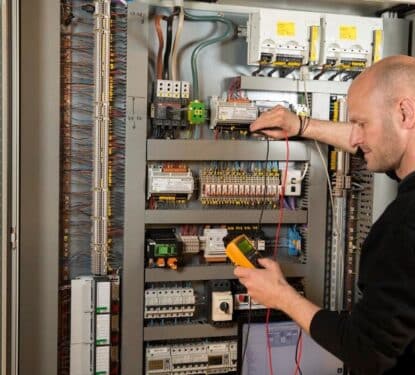The energy landscape is changing. Compelled by climate change and supply reliability drivers, our power systems are trying to find ways to introduce stable, clean, and affordable power to homes, businesses, and institutions. However, the variability of renewable generation and distributed energy resources (DERs) leads to complexity and as these systems expand across progressive electricity systems around the world, we will face significant challenges. Our buildings, the major consumers in our traditional power systems, may provide the answer according to a recent paper.
“Fortunately, advancing technologies open the prospect for more flexible management of building and facility energy loads to benefit occupants, owners, and the grid,” claims ‘Grid-Interactive Efficient Buildings’ the state briefing paper for the National Association of State Energy Officials (NASEO) and the National Association of Regulatory Utility Commissioners’ (NARUC) Grid-interactive Efficient Buildings Working Group. The paper proposes that grid-interactive buildings (GEBs) present the ideal balancing force for the challenging evolution of the electricity grid.
“GEBs take advantage of these new capabilities to optimize energy management by using sensors, analytics, and smart controls to best serve the needs of occupants while considering the grid and external conditions (such as peak loads and weather), the paper continues. “Greater optimization of the significant energy demand and supply functions that buildings offer —on an automated basis— has far-reaching electricity policy and regulatory implications for state energy offices, public utility commissions, utilities, and building owners and investors.”
GEBs are defined by the US Department of Energy (DOE) as “buildings that integrate and optimize DERs in conjunction with the electric grid to provide benefits to building owners and occupants as well as to the operation of the electricity system.” Characterized by efficient, connected, smart, and flexible buildings, GEBs are intelligent and low-energy consuming facilities first and foremost. The key feature, however, is two-way communication of signals between buildings and the grid, which can deliver demand flexibility to the grid.
Load shifting, for example, flattens a building’s demand curve by shifting energy consumption from peak times to lower demand periods. This reduces the cost and stress placed on the grid from fluctuation and peak load management. Loads shifting can also be utilized to ensure that electricity generated from renewable sources is prioritized over more expensive and polluting sources of power. Energy storage, thermal strategies such as pre-cooling/heating, electric vehicles charge scheduling, and other load shifting methods can also be employed to provide important voltage and frequency regulation to assure power quality.
Analysis by international economic consulting experts, The Brattle Group, revealed that load flexibility could deliver more than $16 billion of annual savings by 2030 in the US alone. As much as 57%, or $9.4 billion, of those savings come from avoiding the generation capacity — the power we don’t need to create. A further 29%, or $4.8 billion, in avoided energy costs, 12% ($1.9 billion) in avoided transmission and distribution capacity, and 2% ($0.3 billion) for avoided ancillary services.
The Brattle Group also estimates that cost-effective load flexibility could reach 198 GW, or 20% of national peak load, in the US by 2030. Suggesting that more than half (115 GW) could be achieved under existing market conditions with program expansions, the other 83 GW brought about by “new technologies and supportive policies, regulations, standards, and analytical approaches.” At the center of this major power-shift is the smart building.
GEBs are smart buildings connected to the grid. In order to bring about the vast benefits of distributed energy resources (DER), we must enable demand response (DR). “You can’t spell “DER” without “DR”, states The National Potential for Load Flexibility presentation by Ryan Hledik et al. of the Brattle Group. Going further, you can’t create DR without smart buildings and grid-to-building interconnectivity technology. We have been tracking the development of these crucial interconnectivity elements since their emergence.

In 2016, Memoori predicted the combined market for Energy Software in Smart Buildings (comprised of Enterprise Energy Management, BECS Supervisory Software and Smart Building to Smart Grid Interface Software) rising to nearly $10Bn by 2020, with related software on the Smart Grid side growing at 12% CAGR to nearly $2bn by 2020.
“Energy and buildings markets are beginning the tricky process of harmonization as major global firms look to capitalize on opportunities surrounding smart grids and distributed energy,” our report Smart Buildings Meet the Smart Grid identified. That process is now well underway, driven by the demand for lower costs, greater resilience, and reduced emissions for all stakeholders.
“Both commercial and residential [smart] buildings will allow American businesses and families to save energy and reduce their utility bills without impacting comfort or productivity," according to the Department of Energy's Building Technologies Office. The Pacific Northwest National Laboratory, meanwhile, is "enabling buildings to function as 'virtual' storage devices to reduce the total capacity of grid storage needed to meet the needs of a utility."
Since electrification took hold in our societies the grid has existed to provide buildings with the stable flow of electricity demanded by business, industry, and residential activities. Now, in a partial role-reversal, the grid needs our increasingly intelligent buildings to help it maintain that supply in the age of environmental and resource uncertainty.
Follow to get the Latest News & Analysis about Smart Buildings in your Inbox!



